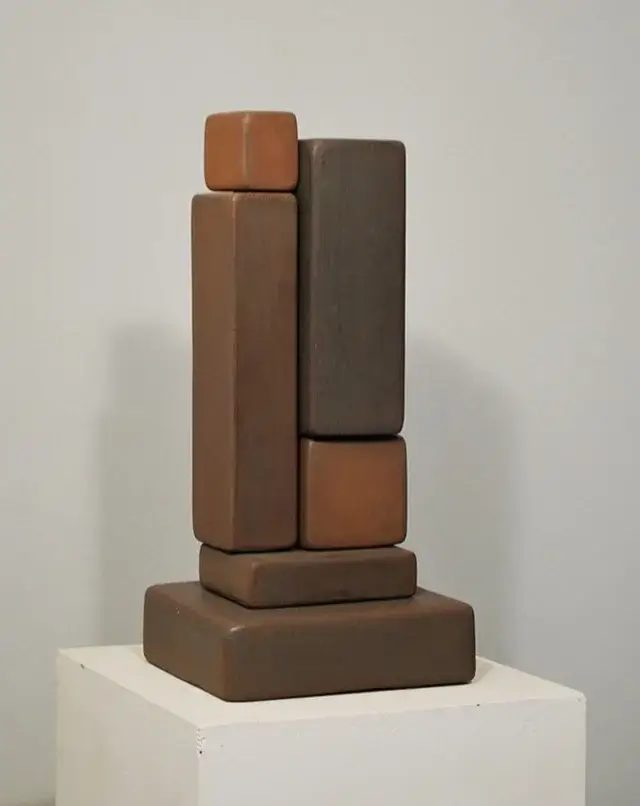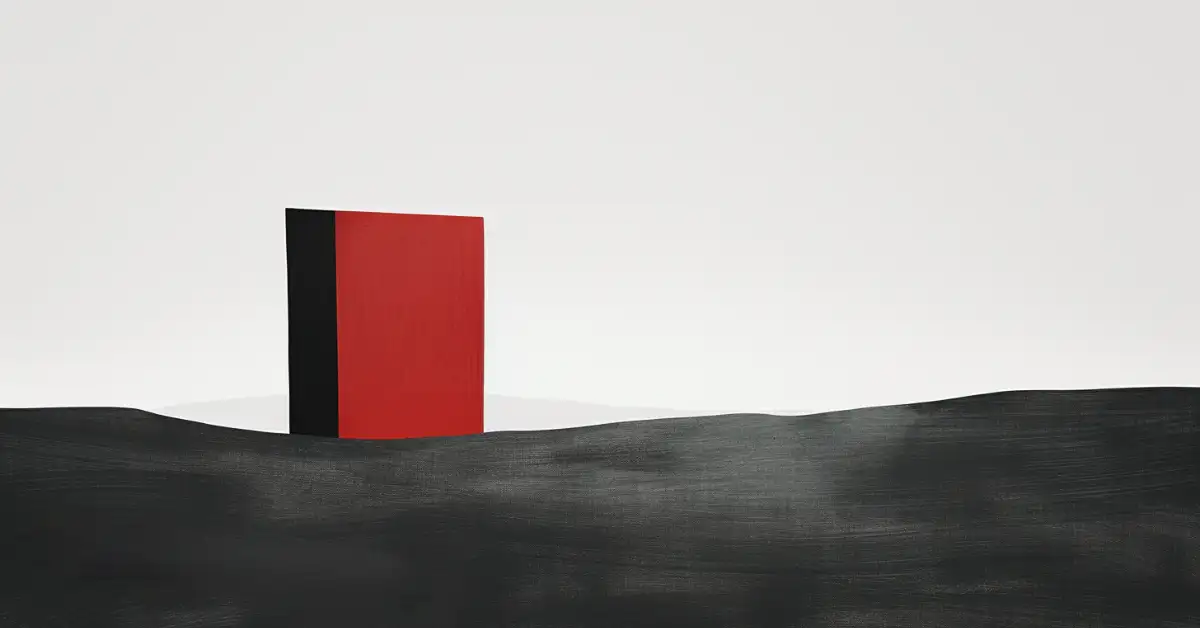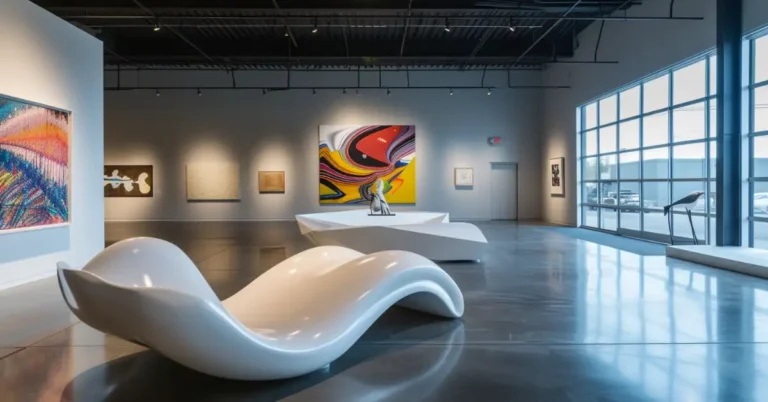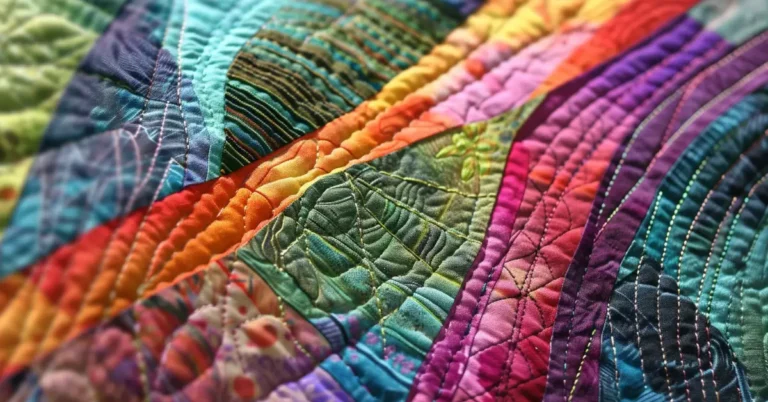Discover the captivating allure of contemporary minimalist art. With its simplistic yet powerful approach, this unique type of artwork demands our focus and provokes thought in ways that other genres may not. By emphasizing the fundamentals of form, color, and space, minimalist artists invite us to appreciate the beauty in simplicity and subtlety.
Pros:
✅Clean lines, natural hues, and modern prints
✅High-Quality
✅Versatile
Cons:
❌Bevor Buying please check out sizes and colors to find your perfect piece
What is Contemporary Minimalist Art?
here you go:
As art enthusiasts, we are always seeking new forms of expression, and contemporary minimalist art has captured our attention with its simplicity and purity. Minimalist art is a movement that developed in the late 1950s and early 1960s as many artists began to move away from abstract expressionism, and focused on reducing their work to its essential elements.
Minimalist art is a movement that developed in the late 1950s and early 1960s as many artists began to move away from abstract expressionism, and focused on reducing their work to its essential elements.
In this movement, we observe a fascination with beauty through simplicity, as well as the interaction between the artwork and the space it occupies. The emphasis on purity and abstraction became a key factor in shaping the direction of minimalism. By eliminating personal expression and emotional content, minimalist art was sometimes criticized as being soulless or even dismissed as “anti-art”. However, we believe that these qualities reflect the core principles of the movement, upholding purity and clarity in its creative process.
The minimalist art movement extends beyond just visual pieces, as it also permeates various art forms such as sculpture and music. Minimalist sculptures often use geometric forms and basic materials to emphasize the beauty in shape and space, while minimalist music is characterized by repetitive sequences and a reduction in sonic elements.
In recent years, we have seen a resurgence of minimalist art in various fields. Contemporary artists, inspired by the legacy of the original movement, continue to explore and expand upon the ideas that were introduced in the 1960s. As we delve into this fascinating world of minimalist art, we discover that there is more than meets the eye. From rigid lines and reductionist compositions to conceptual art, minimalism transcends traditional boundaries and invites us to question our preconceived notions of beauty and artistic expression.
All Key Elements of Minimalist Art

IG: mudhaus
When it comes to contemporary minimalist art, we find it incredibly captivating due to its simplicity and elegance.
Minimalist art comes in several forms, but some of its common characteristics include geometric shapes, patterns, rigid lines, and precise geometry. Monochrome painting often dominates, as artists emphasize simplicity and reduction. Minimalist art is defined by its minimal forms, austere palettes, and emphasis on line and color. Some of the most iconic minimalist works feature rectangles or basic shapes repeated in structured arrangements.
Materials Used in Minimalist Art
The materials used in minimalist art further contribute to its distinct qualities. Artists often employ industrial materials such as fiberglass, plywood, plastic, sheet metal, concrete, and aluminum, emphasizing the essence of the material itself. By using basic and often raw materials, creators reduce their work to fundamental elements, allowing the viewer to focus on the relationships between form, line, and space.
Top 5 Best Contemporary Minimalist Artists
We are thrilled to introduce you to the world of contemporary minimalist art, showcasing five amazing artists who are shaping this art movement. Their powerful, yet simple, creations have continued the legacy of greats like Sol LeWitt and Dan Flavin.
Leigh Bagley is one such artist, working across collage, digital, and print to create geometric works that are rich in both depth and detail. His unique approach to minimalism is truly captivating and has garnered him considerable recognition in the world of contemporary art.
Another remarkable name in this field is Isaac Brest. His minimalist sculptures embody a refined aesthetic, conveying thought-provoking themes within their minimal forms. The powerful simplicity of his art makes a lasting impression on the viewer.
Dan Flavin, a pioneer in the minimalist art movement, is known for his distinctive fluorescent light-based installations. His innovative use of light and color has inspired countless artists, leaving a lasting impact on the contemporary art scene.
Sol LeWitt, one of the founding fathers of minimalism, has left an indelible mark on the art world through his groundbreaking geometric compositions. His work can be seen as a testament to the enduring power of minimalist art.
Lastly, the influential artist Donald Judd has contributed to the minimalist movement with his minimalist sculptures and iconic “boxes” made from materials like steel and plexiglass. Judd’s work is characterized by its precise proportions and clean lines, embodying the essence of minimalist art.

IG: jeancharasse
The Evolution of Minimalist Art
We find ourselves captivated by contemporary minimalist art, a subject that has continuously evolved over time. Emerging as a natural response to the complexity and emotional intensity of abstract expressionism, minimalist artists aspired to a simpler, more objective approach. Early proponents included Frank Stella, whose black paintings reduced art to its most basic geometric shapes, and Dan Flavin, known for incorporating fluorescent light tubes in his sculptures.
During the 1960s, the minimalist art movement gathered steam, fueled by artists like Sol LeWitt, Donald Judd, and Robert Morris. They rejected the traditional confines of the art world, exhibiting their works in lofts and galleries, accentuating the importance of space and the viewer’s interaction with the artwork. This new wave of artists was influenced by earlier movements, such as the Dutch De Stijl, which focused on geometric abstraction and minimal forms.
The 1970s saw a fresh generation of minimalist artists, including Carl Andre and his bold floor installations, Richard Serra with his mammoth steel sculptures, and American art duo Isaac Brest and David E. Peterson, pushing the boundaries of minimalism in unique ways. As the movement flourished and entered the mainstream as public art, it left an indelible mark on the art world, paving the way for what we now know as contemporary minimalist art.
Minimalist Art and Interior Design
We can’t help but notice the growing popularity of contemporary minimalist art in the world of interior design. This fresh approach captures a clean and smooth aesthetic, offering a modern take on home decor.
Minimalism focuses on simplicity and functionality to create calm and harmonious living spaces. This design philosophy aims to keep distractions at bay, allowing individual elements to shine. A well-executed minimalist interior design enhances the architectural features of a space and often features a monochromatic palette, with pops of color used sparingly as accents.
Incorporating minimalist art into modern interiors is an art form in itself. Designers carefully consider color, shape, size, and texture when choosing pieces for a minimalist space. Larger, bold artwork serves as a focal point, while smaller, complementary pieces can enhance the room’s ambiance.
One key aspect of minimalist interior design is the careful editing of items, showcasing only those that bring joy and have a purpose. This method encourages a clutter-free environment, where objects work in harmony within the space. The combination of minimalist art with thoughtfully chosen furniture and accessories is what ultimately sets this design approach apart.
Minimalist art, when applied to the realm of interior design, evokes a sense of tranquility and modernity. By stripping away excess and embracing clean lines and intentional choices, we create spaces that minimize distractions and warmly welcome guests into our carefully curated homes.

IG: keithharper_art
FAQ – Contemporary Minimalist Art
What is contemporary minimalist art?
Contemporary minimalist art is a genre of art characterized by rigid lines, precise geometry, and austere palettes. It is a counterpoint to the minimalist art of the early 1960s and is often based on the inspiration of contemporary minimalist life.
What is contemporary minimalism?
Contemporary minimalism is a design style that combines the simplicity and functionality of minimalism with contemporary elements and materials. It focuses on clean lines, neutral colors, and the use of space and light to create a calm and uncluttered environment.
Is minimalism a contemporary modern style?
Minimalism is a style that can be considered contemporary and modern, but it is not limited to those design styles. It involves the use of reductive design elements, without ornamentation or decoration, and aims to simplify living spaces and reduce clutter.
How do I find my art style?
To find your art style, make a lot of art, experiment, analyze your own work, try out different styles, techniques, and approaches, and draw what makes you happy. You can also take an art personality test.
If you liked this blog post about the topic: “Contemporary Minimalist Art”, don’t forget to leave us a comment down below to tell us about your experience with it.
If you want to keep reading more from us, have a look at these articles.







